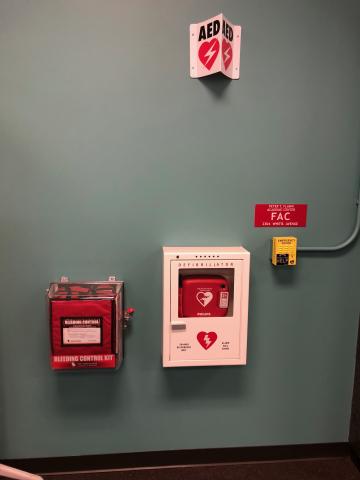Celebrated Entrances
To enhance safety and security for university buildings after normal operational hours, each building has a designated single entrance (celebrated entrance) that faculty, staff, and students can access by using their UT ID card.
Be sure to remember that "Your ID is your Key" in order to gain access to buildings after hours.
After regular operating hours, all general-purpose classroom (GPC) buildings have the ability to lock down and if you need to access a classroom or lab after hours, your UT ID is your key for entry. For example,
- GPC buildings are required to be accessible from 6 a.m. to 11:45 pm, seven days a week and during university holidays
- GPC buildings and facilities are opened at 6 a.m., Monday-Friday and remain open until 7 p.m. At 7 p.m., GPC buildings and facilities then transition to restricted access hours and all students, faculty, staff, and university personnel are required to enter through the buildings’ entrances controlled by BACS.
Safety Hubs
In addition to access to building after hours, the celebrated entrance of academic buildings is also designed to provide emergency and lifesaving resources to faculty, staff, and students.
Safety Hub Elements

The safety hub consists of the follow components:
- Automatic External Defibrillator (AED)
- Emergency Call Box
- Bleeding Control Kit
- Building Name, Address, and Acronym Signage
Emergency Call Box
The emergency call box is designed to provide a direct line of communication to the UT-Austin Police Department Dispatch Center. Simply by pushing the button on the call box, individuals in need of assistance are directly connected to a UTPD dispatcher. Once the individual's call is connected, they can provide important information regarding the emergency and the location by utilizing the red signage above the emergency call box that includes the building name, address, and acronym. The UTPD dispatcher will then dispatch the appropriate first responders to the scene.
Bleeding Control Kit
During an emergency, timely actions are important to save lives. Depending on the emergency, first responders may not be able to render aid to all victims in a quick manner and uncontrolled bleeding can result in death within minutes. The bleeding control kits are designed to provide the necessary resources to stop the bleed until the emergency responders can arrive and provide the appropriate aid. The bleeding control kits provide all the necessary equipment to control bleeding including; a tourniquet, trauma dressing, gloves, black ink marker, and proper instructions.
The bleeding control kits are designed to be public access and provide a quick life saving resource that is easy to use when following the instructions. Training classes are available for the bleeding control kits, for information about training classes please contact the Office of Security and Emergency Management.
Click here for more information regarding the Stop The Bleed program.
Automatic External Defibrillator (AED)
The heart produces an electrical signal with each heartbeat. This electrical signal is what causes the heart to contract and pump the blood throughout the body. Abnormal heart beats can be caused when there are problems with the electrical system in the heart. The most common arrhythmias that are caused are called ventricular fibrillation and ventricular tachycardia. Individuals who have these types of arrhythmias benefit from the use of an AED because the electrical shock provided by the AED can restore the heart to a normal rhythm.
Early defibrillation is proven to save lives. The sooner an AED is used on a person in Cardiac Arrest, the better chance of survival. Using an AED is simple: Turn on the AED, Follow the Prompts, Press the Shock Button if Instructed.
An Automatic External Defibrillator is designed to deliver an electrical shock to a person experiencing Cardiac Arrest.
To sign up for CPR Certification training, visit the safety certification page on the Recreational Sports website. This is a 2-hour class offered by Recreational Sports and leads to a certification card that is valid for 2 years. In addition to the individual classes, they also offer custom classes for groups and campus departments and the webpage is regularly updated with available classes.
These tools are designed to help you be prepared for an emergency requiring the use of an AED and/or CPR.

